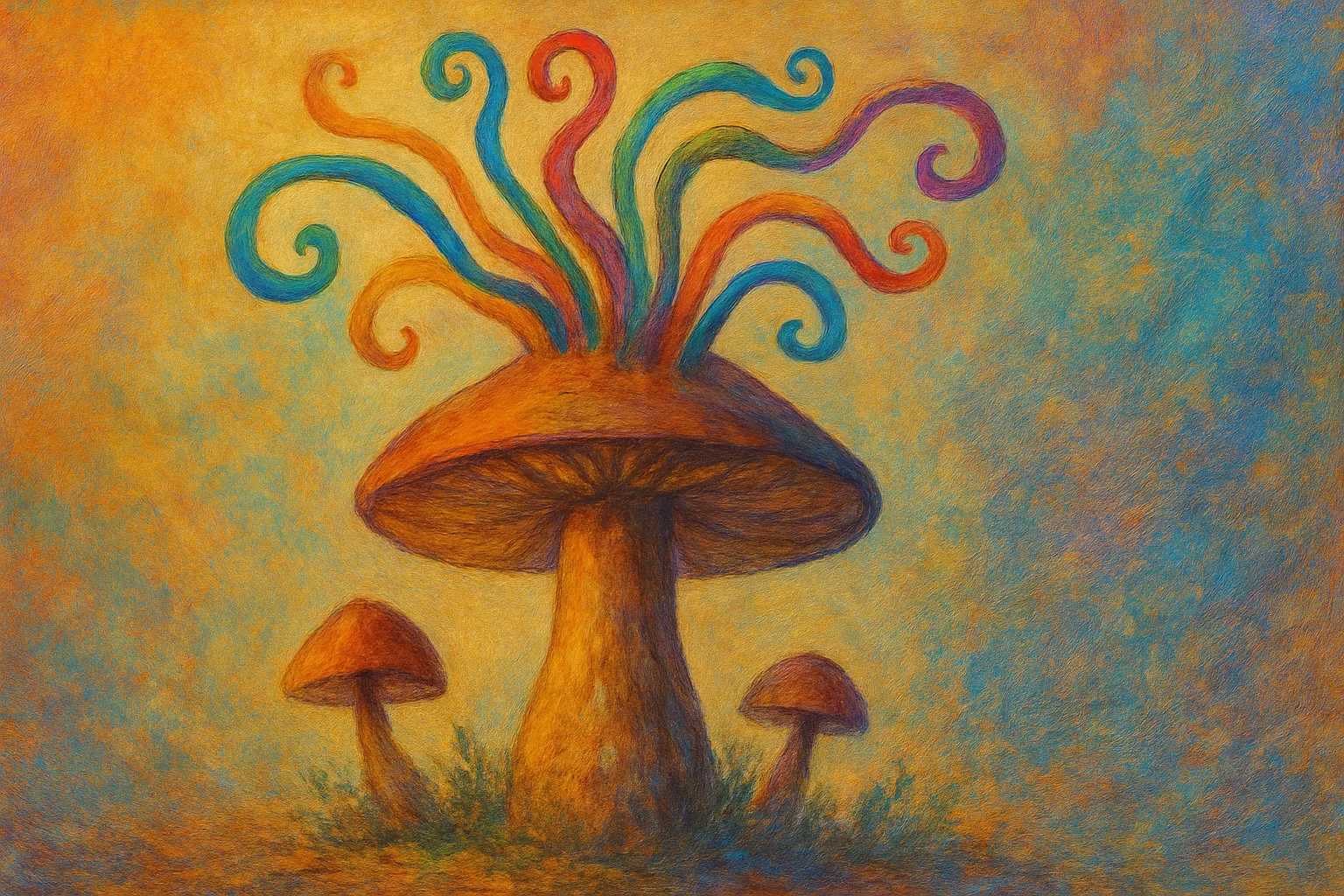There was a time I would’ve called myself an artist.
I painted. I sketched. I played in bands. Creativity was how I moved through the world—how I expressed what I didn’t yet have the words for. But somewhere along the line, that part of me faded. Or maybe more truthfully, it got drowned.
Alcohol entered my life early. In high school, the desire to go drink slowly began to outweigh everything else. Drawing didn’t feel important anymore. The bands fell away. The spark that once burned so easily in me dulled. And I assumed it was just gone.
But it wasn’t gone. It was buried.
That’s what I’ve learned through healing—especially through microdosing. Creativity isn’t something you push your way into. It’s not a button you press. It returns when you’re ready.
When your system feels safe.
When your mind stops sprinting through stress.
When your body starts to exhale again.
And there’s science behind this. Research shows that creativity is deeply connected to something called the default mode network—a brain network tied to imagination, introspection, and memory. In people with anxiety or depression, it can become overactive, leading to rumination. Psychedelics, even in microdoses, appear to quiet that network, allowing for more flexible, creative thinking (Carhart-Harris et al., 2014).
That mirrors what happened for me.
Microdosing didn’t immediately bring back my paintbrush or my guitar. But it did something quieter—it gave me the space to want again. The curiosity came first. Then little projects. Then bigger ones. I found myself back in motion, not with performance or perfection as the goal, but with a real hunger to create.
Recently, I even started hitting up open mic nights—just me, a guitar, and a whisper of the old spark, returned.
I’m not alone in this.
“Taking LSD was a profound experience, one of the most important things in my life. It reinforced my sense of what was important—creating great things instead of making money.”
—Steve Jobs
Even the minds behind some of the most iconic creative work have acknowledged the role of psychedelics in helping them see—and create—differently.
But here’s what I’ve come to understand:
Creativity isn’t just about music or art.
It’s the way you decorate your home.
The questions you ask in conversation.
The new solution you see at work.
The story you tell your kid at bedtime.
Creativity is the language of being alive.
And when we start to heal—when the fog lifts and the pressure eases—we begin to remember how to speak it.
And it’s not just personal—it’s universal. Studies show that when people feel psychologically safe, their intrinsic motivation and creative output increase (Amabile & Pratt, 2016). And recent microdosing research has even shown short-term boosts in both divergent and convergent thinking—the kinds of thinking tied to originality and problem-solving (Prochazkova et al., 2018).
“The meaning of the universe cracked open… It was a profound education in the nature of mind and in the nature of the universe.”
—Sting, on psychedelics
So if you’ve lost touch with your creative spark… maybe it’s not lost. Maybe it’s just waiting for safety.
Maybe it’s a symptom of your healing.
Ready to Reconnect with Your Creative Self?
At NLYTN, we believe healing unlocks creativity—not the other way around. Through microdosing support, daily self-check-ins, a private community, and access to therapeutic resources, we help you clear space for the real you to emerge—creative spark and all.
Join the NLYTN Microdosing Community and start your journey back to yourself.
